Terebellum, also known as Omega Sagittarii, is the 28th brightest star in the constellation of Sagitarius, the celestial Archer. Though it is faint in comparison to most stars, it is still visible to the naked eye and the star is in fact, a binary system.
Key Facts & Summary
- Terebellum is a yellow subgiant star of spectral type G5 IV.
- The star is located at around 76.4 light-years / 23.4 parsecs away from the Sun.
- Terebellum has an apparent magnitude of 4.70 and an absolute magnitude of 2.64.
- This star is actually a binary system, consisting of a subgiant star and an uncharacterized companion.
- Terebellum has a mass of 152% that of our sun, and a radius of around 287% the sun’s radius.
- The star emits more energy than our sun. It is estimated to be around 7.1 times brighter than our sun.
- Terebellum is closely matching our sun’s temperature. Its average surface temperatures are estimated to be around 5.499 K.
- Terebellum spins faster than our sun, with a rotational velocity of around 5.6 km / 3.4 mi per second.
- In addition to this, the star is also drifting closer with an estimated radial velocity of around -16 km / -9.9 mi per second.
- Terebellum is much older than many of the brightest stars in the constellation of Sagittarius. It has been estimated that Terebellum has existed for approximately 3 billion years. Regardless, It is still much younger than our sun.
- Terebellum has a surface gravity of around 3.64 cgs.
- This star is very close to the ecliptic, thus it is very prone to be occulted by our Moon.
- The members of the Terebellum star system orbit each other once every 4.6892 years.
- They have an eccentric orbit of 0.82 and much of the other components still remain elusive to further observations.
Terrebelum / Omega Sagittarii, together with 60,62, and 59 Sagittarii stars formed the asterism called Terebellum. The traditional name Terebellum, derives from a Latin translation of a Greek word.
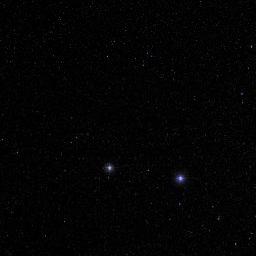
Originally named “tetrapleuron”, the term was used by the Greco-Roman astronomer Ptolemy, for a quadrilateral of 4th magnitude stars, all within two degrees of each other. The aforementioned stars each marked a corner.
59 Sagittarii marked the southern corner, 60 Sagittarri marked the northwest corner while 62 Sagittarri marked the southwest corner and Omega Sagittarii marked the northeast corner.
Formation
Currently, it is unknown if Terebellum is associated with any moving star group, or if its components formed at the same time. The primary star, Omega Sagittarii, formed at around 3 billion years ago. The origin is speculative, but it most likely formed from a molecular cloud of dust and gas. Gravity pulled the swirling gas and dust together and formed the Omega Sagittarii star.
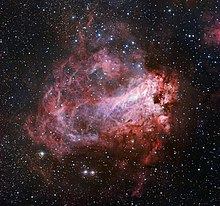
Distance, Size, and Mass
Terebellum is located at around 76.4 light-years / 23.4 parsecs away from the Sun. Though it is the 28th brightest star in its constellation, it is actually bright enough to be seen with the naked eye.
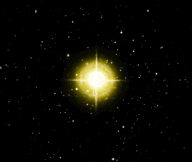
Terebellum is bigger and more massive than our sun. It has an estimated 152% of the mass of our sun – 1.52 solar masses. Some put it at around 1.60 solar masses while others at 1.46. Terebellum has a radius of around 287% the sun’s radius, or 2.87 solar radii. This is again disputed, with some estimating that Terebellum’s radius is at around 3.24 solar radii, while others at 2.53. Regardless, the star is clearly more than 3 times bigger than our sun.
Other Characteristics
Terebellum is a yellow subgiant star of spectral type G5 IV. It has an apparent magnitude of 4.70 and an absolute magnitude of 2.64. It emits seven times more energy than our sun, being around 7.1 times brighter.
Terebellum is closely matching our sun’s temperature. Its average surface temperatures are estimated to be around 5.499 K. Our sun has temperatures of around 5.778 K.
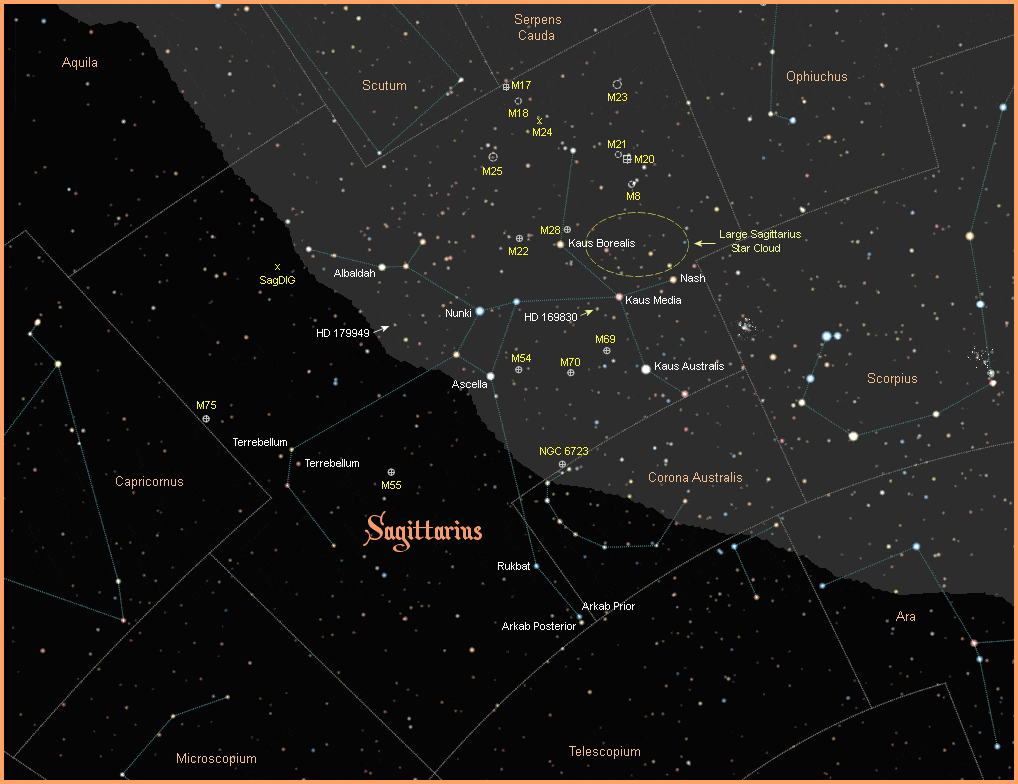
Terebellum spins faster than our sun, with a rotational velocity of around 5.6 km / 3.4 mi per second. In addition to this, the star is also drifting closer with an estimated radial velocity of around -16 km / -9.9 mi per second.
The star has a surface gravity of around 3.64 cgs. Since Terebellum is very close to the ecliptic, it is very prone to be occulted by our Moon.
Stellar System
Much information regarding the Terebellum star system remains unknown. It is uncertain how many stars are associated with this system. However, one star is surely bound to it.
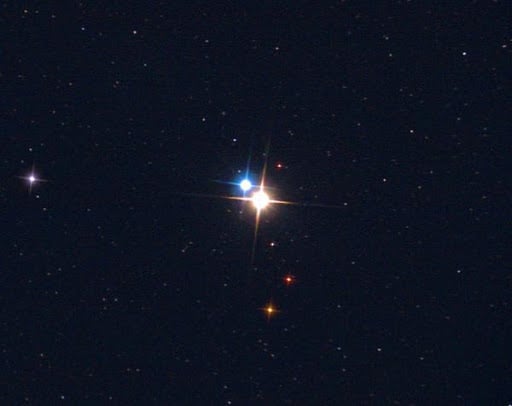
The primary star and a component star orbit each other once every 4.6892 years. They have an eccentric orbit of 0.82 and currently, little else is known about the elusive companion star.
Location
Terebellum is located in the zodiacal constellation of Saggitarius, the celestial archer. This constellation is situated exactly towards the center of the Milky Way.
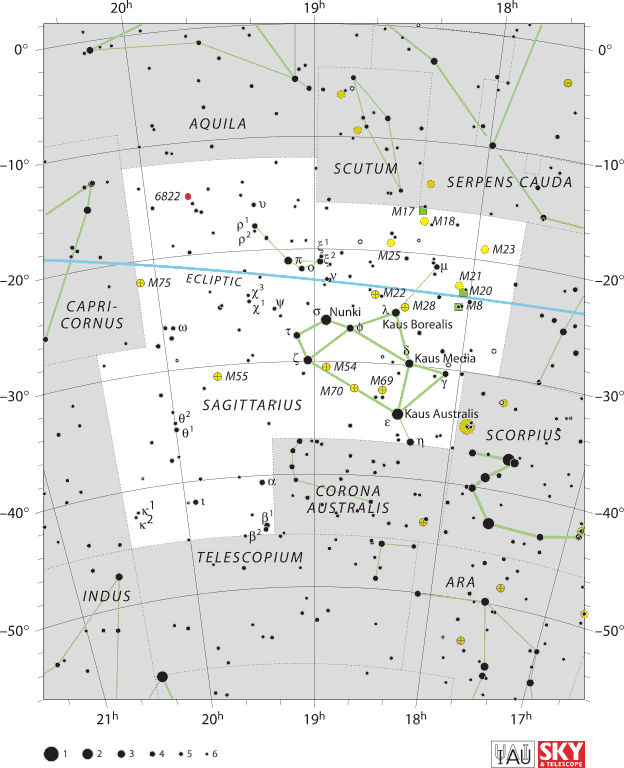
Omega Sagittarii/Terebellum, is located near the eastern constellation border with another famous zodiacal constellation, Capricornus. Since the constellation of Saggitarius lies in the direction of the Milky Way’s center, it is located in the densest region of the galaxy. There are many interesting stars and deep-sky objects in Saggitarius, such as globular clusters, Messier objects, nebulae, and much more.
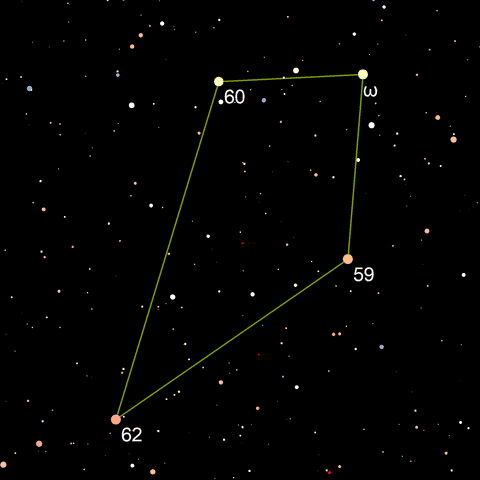
The month of August is the best time to try and observe the celestial objects in Sagittarius. Most objects are not visible year-round to northern observers and even farther north, they are completely invisible. When it comes to the mid-northern latitudes, they can only be seen above the southern horizon during the summer months.

The Future
Terebellum is drifting closer to us with an estimated radial velocity of around -16 km / -9.9 mi per second. G-type stars usually stage on this stage between 4 to 17 billion years, after which, when they convert all of their hydrogen and helium supplies, they evolve into red giant stars.
Did you know?
- The constellation of Sagittarius is one of the Greek constellations, first cataloged by the Greco-Roman astronomer Ptolemy, in the 2nd century C.E.
- Sagittarius is the 15th largest constellation in the sky and contains more Messier objects than any other constellation.
- In a sense, Sagittarius contains the center of the Milky Way, marked by the radio source / supermassive black hole, designated as Sagittarius A*.
- The Chinese knew Terebellum as Guo Guo – the First Star of Dog Territory – “Dog Territory” – refers to an asterism formed by Omega Sagittarii, 60, 62, and 59 Sagittarri.
Sources:
Image source:
- https://mw1.google.com/mw-planetary/sky/skytiles_v1/21_73_7.jpg
- https://d1k5w7mbrh6vq5.cloudfront.net/images/cache/75/2f/0f/752f0ffc7746d2a195a30d3842957de0.jpg
- https://wiki.fed-space.com/images/thumb/2/24/Fs-sc-2_Omega_Sagittarii_A_21507.04.png/192px-Fs-sc-2_Omega_Sagittarii_A_21507.04.png
- https://www.peoplesguidetothecosmos.com/constellations/sagittarius.gif
- https://lh4.googleusercontent.com/proxy/0lo6ycQCdYEbqHDjUJ2V0gjByyex8GMbfjBCN3EgaUvkcwJkl5j8xjdyJGc-IqYwbdQgSUDMCdFoqmEhy31Uc8vfa31rO6fyst2VlpwaF0a0oGlla4Ax47Ts2QA
- https://upload.wikimedia.org/wikipedia/commons/thumb/5/54/Sagittarius_IAU.svg/624px-Sagittarius_IAU.svg.png
- https://upload.wikimedia.org/wikipedia/commons/thumb/1/12/Terebellum_asterism.png/480px-Terebellum_asterism.png
- https://www.constellationsofwords.com/images/stars/Terebellum.JPG
